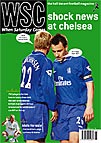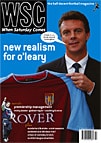 In an extract from the new edition of Tor!, his book on the history of German football, Uli Hesse-Lichtenberger explains the ethnic make-up of the national side
In an extract from the new edition of Tor!, his book on the history of German football, Uli Hesse-Lichtenberger explains the ethnic make-up of the national side
On a cloudy Saturday, the first day of September 2001, England came to Munich for a crucial World Cup qualifier. On paper, things looked promising for Germany, who probably only needed a draw to go through to the finals. The country approached the match with optimism, even anticipation, content with the job Rudi Völler had done so far. During his 13 months at the helm, the new national coach had put into action many of the ideas his two predecessors regarded as suicidal. Germany no longer played with a sweeper, although you could still have listed the formation as 3-5-2. However, it was the system Argentina had popularised during the 1998 World Cup, with a flat back three and a crowded midfield that did most of the defending before the opposition even reached the last third of the pitch.
